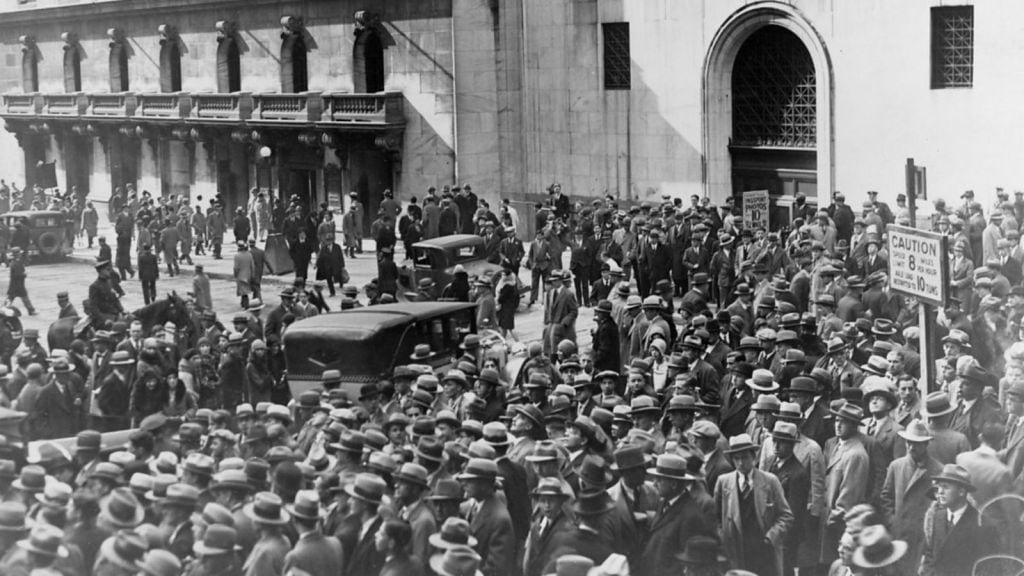The American stock markets are on a high right now with AI investments soaring and the Trump administration fueling the cryptocurrency buzz. However, is the bull run soon coming to an end?
In a new conversation on Fareed Zakaria GPS, journalist Andrew Ross Sorkin sat down with the host to talk about his book, ‘1929-Inside the Greatest Crash in Wall Street History and How It Shattered a Nation’, and the unnerving question behind it. Are we accidentally replaying the conditions that led to the most devastating stock market crash in American history?
Why are people nervous about valuations
Zakaria started by pointing out how economist Robert Shiller’s valuation index, which tracks how expensive stocks are, is now at one of its highest levels in history. Zakaria said the only comparable peaks were: 1999, right before the dot-com crash and 1929, right before the Great Crash.
Andrew Sorkin replied, “I think his chart is correct. I didn’t know that I was walking into a situation where I would be seeing these parallels in real time.” He added, “The amount of euphoria that was taking place in the 20s is so similar to the euphoria taking place in this AI bubble.”
He explained that back then, the excitement was around automobiles, technology and radio. “Radio was the NVIDIA of its time. It was like a meme stock.” Sorkin said the biggest issue in the 1920s was leverage, people borrowing huge amounts to buy stocks. Today, the borrowing situation is different, but not completely reassuring.
He said, “The thing back then was, it was about leverage. It was about how much debt people are taking on huge amounts of borrowing. The real question now is, how much borrowing is actually taking place? How much of the economics really makes sense?
Sorkin said that many tech companies have made huge commitments to buy chips from NVIDIA and others, even though these bets are not profitable yet. “At what point are they not going to be able to make a payment? And at what point do all of the stocks, which people have bought, in large part on margin, but not at the same level as 1929, And that’s the question.”
America’s huge debt load
Sorkin flagged one major difference between then and now. “Back in 1929, we had a budget surplus in America. We hardly had any debt. Today, we have enormous debt. And if there is a crash, what do you do? The lesson we’ve learned from 1929 is you throw money at the problem. You bail it out. But at some point, do bondholders say, excuse me, we’re happy to lend you money in the future, but you’re going to have to pay us an extraordinary amount of money for the risk?” This, he said, could limit how much support the government can offer if markets sink.
Why bubbles can last longer than expected
Zakaria reminded that in 1996, former Fed chairman Alan Greenspan warned the market was too high and called it “irrational exuberance.” The bubble didn’t burst until 2000.
Sorkin agreed, “Back in 1928, Charles Merrill, told people to get out of the market. And maybe in retrospect, you’d say, Oh, that sounds smart, except that from the beginning of 1928 to September of 1929, the stock market went up 90%. And so that is always the question. Will there be a fall of some sort? There has to be. When and how deep? That’s the question. I hope it’s closer. I hope whatever happens looks a lot more like 1999 than 1929.”
Sorkin said he doesn’t believe a repeat of the Great Depression is inevitable. Back then, many policy mistakes made the crash worse. “The Federal Reserve did nothing. Back then, there were no bank capital requirements. There was no SEC. So all there was was manipulation. Today, I like to believe that things are slightly in a better place.”
AI’s growing pains: Not enough power to run the chips
Zakaria pointed out how Big tech companies like Google, Amazon and Meta are extremely profitable. They aren’t taking on debt to invest in AI. But they don’t have enough energy to run the massive data centres they’re building. He asked: could this energy crunch be the brick wall the AI boom crashes into? Sorkin replied, “Oh, there’s no question the energy piece is going to be a problem.”
He added that while tech companies themselves are cash-rich, the companies building the physical infrastructure, energy firms and real-estate developers are using heavy leverage. “Chips themselves depreciate quickly. There’s a half-life to these things. So after three years, you have to buy them all again. After three or four years, you’re probably going to have to get new and better chips. And so that’s a whole other piece of the economic model that’s different.”


